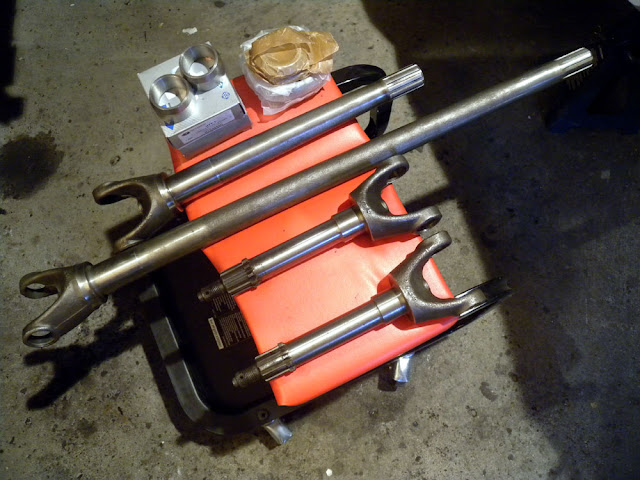Oil seals for the front axle arrived here just 48 hours after placing the order with 3 Brothers Classic Rovers - which is typical of their truly excellent service.
Getting the proshaft bolts off proved to be a struggle, but they were eventually removed. They were all seized, and the awkward spaces around them makes getting tools in there difficult. Even the special prop shaft tool I had purchased didn't help, as it was blocked slightly by the yolks. On top of that, the prop shaft wanted to turn a little, making trying to turn the nuts frustrating, even with the rear wheels on the ground (in 4wd). After struggling with every approach I could think of, I ended up searching on the Rover forums at the options others have tried. I settled on 1: used a trusty 24" pipe wrench to immobilize the prop shaft; and 2: drilled a large hole in the side of the nuts, and then split them with a cold chisel. An easy process, it turned out, not taking too much effort or time. Of the four nuts nearest the front axle, one nut was already loose, two were drilled and spilt, and the last surrendered after being drilled only. The nuts themselves were very soft, and had rounded off immediately; don't think they were original. This thought was reinforced by the discovery that the four bolts were inappropriate for the prop shaft.
The four bolts on the right are those from the prop shaft at the front axle. The bolt at left is from the end at the gear box, and is the correct type (at least it has a shank, if not).
Prop shaft hangs its head in defeat. : )
A view of the front axle 'production line'. Everything here is just waiting for cleaning and/or paint, and then is ready to be then be reassembled (once the axle itself is off, cleaned and inspected). All the new bearing races, etc., are in place (except one bearing, which I damaged today while installing. Argh!) Lower left: Swivel assemblies; On the right: windshield under wraps (at top), and then the halfshafts, hubs and then brake backplate parts. Steering arms are just visible. The white cover is protecting the new chassis.































